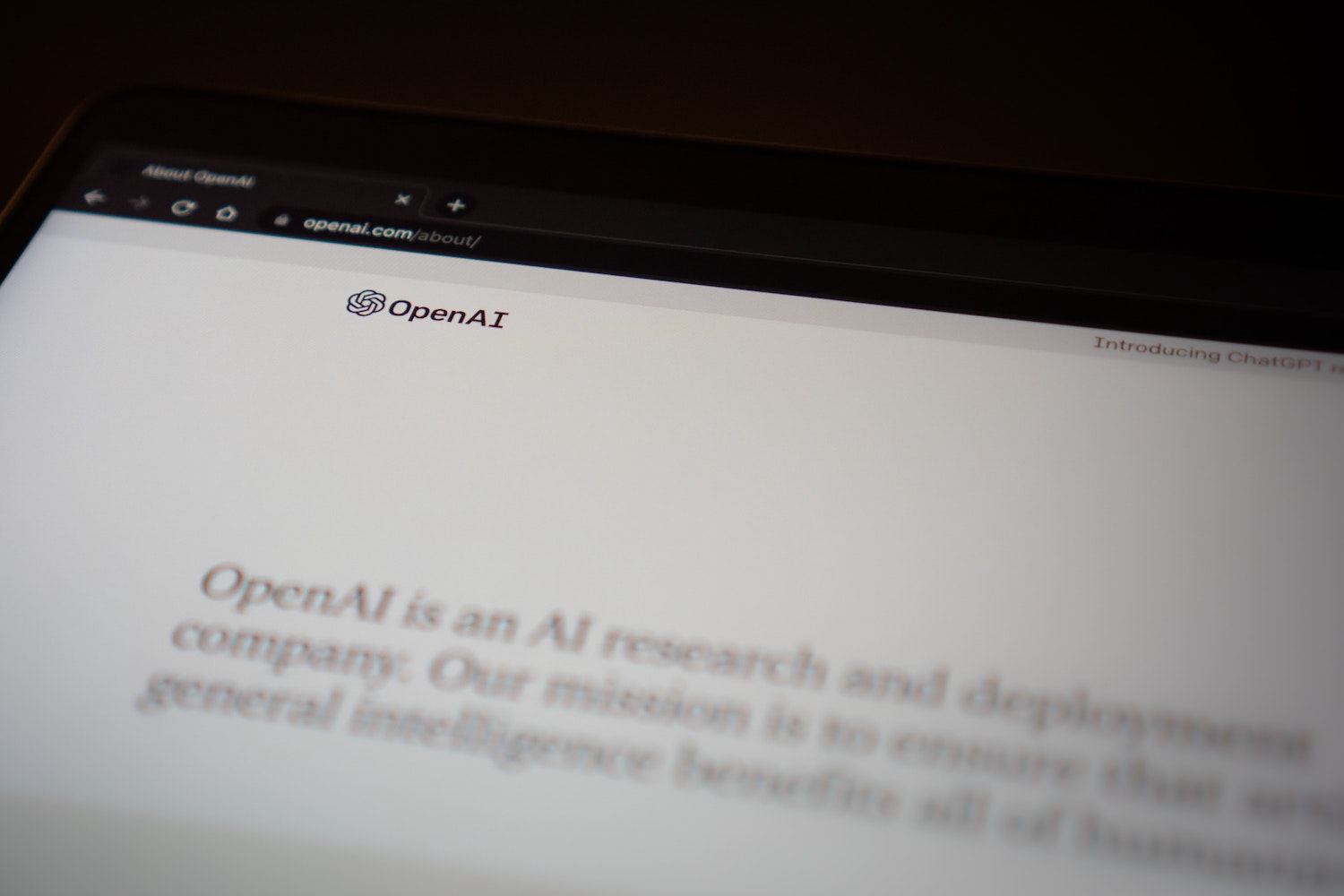
The rise of ChatGPT has been nothing short of phenomenal. OpenAI’s launch of ChatGPT set records for fastest-growing user base in history and the fastest growing app in the world. It has impressed experts with its writing ability, proficiency at complex tasks and ease of use.
Should we be worried? Are robots coming for our jobs?
As technology continues to evolve, we’re seeing more and more organisations embrace AI and machine learning to transform every aspect of their business. It’s also got immense potential for assisting HR processes. Perhaps unsurprisingly – ChatGPT has the potential to revolutionise how we hire, train, and manage our employees.
In this blog post, we’ll explore the many ways that ChatGPT could help HR professionals improve the employee experience and drive business results. From automating routine tasks to providing personalised support and guidance, we’ll see how ChatGPT could help HR professionals work smarter, not harder.
So, whether you’re an HR professional looking to embrace the future of work, or you’re simply interested in the role that AI could play in HR and people management, let’s dive into the world of ChatGPT.
What is ChatGPT?
ChatGPT is an AI language model developed by OpenAI. It is a pre-trained artificial intelligence model that uses deep learning algorithms to generate human-like text based on a given prompt.
ChatGPT has been trained on a massive amount of diverse text data from the internet and is capable of answering questions, generating creative writing, translating languages, and much more.

ChatGPT is part of OpenAI’s GPT (GenerativePretrained Transformer) family of language models and is designed to generate text in a conversational style. The model has been fine-tuned to generate human-like responses to a wide range of prompts and can provide information on a variety of topics, including history, science, current events, and more.
In essence, ChatGPT is an AI tool that allows users to have natural language conversations with an AI-powered agent, providing quick and accurate information in real-time.
How does ChatGPT work?
ChatGPT is best described as a language machine – it’s a technique based on machine learning and masses of training data to build sentences word by word, using its knowledge and experience to predict what word should come next to generate human-like responses.
It doesn’t scour the internet for answers like Siri or Alexa – instead it uses a type of deep learning called transformer architecture. The model has been trained on a massive amount of text data, which allows it to understand the patterns and relationships between words, phrases, and sentences. When a user inputs a prompt or question, ChatGPT uses this understanding to generate a response.
Chat GPT is able to respond to a wide range of prompts and questions, and the model’s ability to understand and generate text makes it a powerful tool for natural language processing and conversational AI applications.
You can also think of Chat GPT as an engine, and with 175 billion parameters, what it can do is pretty impressive. From passing MBA business exams, to writing poetry and stand up comedy, to answering complex questions on the spot.
But remember, Chat CPT is a programme trained using a transformer algorithm and masses of data. That means it is notoriously rife with bias from anything that exists within the data and was programmed into the algorithm, even if unintentional.
It only finished its training in 2021, so it might not be as up to date as you think. It also hasn’t been programmed to verify its own accuracy or reliability, which can lead to wildly inaccurate results, or just nonsense.
While Google’s Bard perhaps came off worse after providing a wrong answer at its launch event, inaccuracy is still a risk in these tools. They aren’t intelligent, they can’t think for themselves, and they are only as good as their input data.
Even still, we are obsessed. And like many, we are curious about how it will impact the business world.

The impact of ChatGPT on businesses around the world
As a language model developed by OpenAI, ChatGPT has the potential to have a significant impact on businesses around the world. With such impressive functionality and speed in processing complex data, here are just a few ways in which ChatGPT could transform various sectors and industries…
Customer service
Chatbot anybody? This is where ChatGPT is extremely strong as it can understand intent in a question and provide very astute answers. This means it can be used to automate customer service by providing 24/7 support and instant human-like responses to customer questions, which can speed up the resolution of customer complaints, improve customer satisfaction and reduce costs for businesses.
It can even hold a conversation, entertaining and amusing your customers. Because of ChatGPT’s large language model, some reports estimate that it may be possible to improve customer service by about 70% because of its ability to answer complex questions that aren’t straightforward.
Sales and marketing
ChatGPT also has a lot to offer sales and marketing teams. It can be used to generate personalised content tailored to a business, such as product descriptions and email marketing campaigns, to improve engagement and conversions. You can also use it in lead generation to generate outbound templates, or text for inbound lead generation.
Thought that was all? It also excels at creating sales scripts, email outreach templates and follow up templates. Have we mentioned you can also use it to qualify leads by asking specific, targeted questions to potential customers?
It’s fair to say that ChatGPT is powerful at all levels of the sales funnel – there really is no limit.
Training and learning
Because of its ability to break down complex information into more digestible, easy to understand snippets, ChatGPT can be used to provide students and teachers alike with answers to their questions on the spot.
ChatGPT can assist with generating ideas and text for writing assignments, which may be particularly helpful for individuals with dyslexia, dysgraphia, or other conditions that affect writing abilities. ChatGPT could also have a significant role in Learning Management Systems, helping to configure and deliver hyper-personalised tailored learning pathways for employees.
HR
The rise of generative AI like ChatGPT can provide seemingly infinite support.
ChatGPT can be used to automate HR processes, such as streamlining recruitment and employee onboarding, to improve efficiency and save time. From screening candidates, to onboarding candidates, answering HR queries, and providing objective guidance and advice on all sorts of topics, ChatGPT will help to settle disputes, solve problems and make decisions.
It’s still early days so it is hard to conceive just how much ChatGPT will transform a wide range of industries by automating tasks, improving efficiency, and providing instant answers to common questions. However, before we get carried away, we all need to remember that while ChatGPT is a powerful tool, it’s only one part of the puzzle.
What are the benefits of using ChatGPT in HR?
ChatGPT has the potential to offer several benefits when used to support HR. Here are the top three benefits we can see straight away.
Saves time
ChatGPT can automate repetitive HR tasks, such as answering employee questions, processing leave requests and scheduling interviews, freeing up HR staff to focus on more strategic tasks. Of course, good HR software also makes light work of these tasks while keeping a helpful audit trail, making ChatGPT an excellent complement to your HRIS.
Improved efficiency
ChatGPT can provide instant answers to common HR-related questions, reducing the time and effort it takes for employees to get the information they need. Can’t find what you’re looking for? Ask ChatGPT to locate it. Can’t think of an answer to a tricky question from a co-worker? Get ChatGPT on the case.
Hyper personalisation
ChatGPT can be used to provide personalised HR-related recommendations and information, such as job opportunities and career development advice, to employees based on their individual needs and interests.

How could HR professionals use ChatGPT in recruitment?
Recruitment is a time consuming and costly process that requires a lot from your HR team, from extensive research, to thorough screening, and tremendous people skills in order to bring in high-quality hires. When you add everything up, a new hire’s average cost can be between $3,500 to $5,000.
So when it comes to recruitment, ChatGPT could help streamline and improve recruitment in a number of interesting ways. But we reckon Employment Hero still has an edge in the competition.
1. Chatbots for job applications
ChatGPT can be used to create chatbots that can answer common questions from job applicants such as information about the company, the role, and the application process. This can save HR professionals time as well as improve the candidate experience, which is crucial to your employee value proposition.
2. Screening candidates
ChatGPT could also be used to automate initial candidate screening by asking pre-screening questions and providing instant feedback to both the hiring team and to applicants. This can improve the efficiency of the recruitment process and help HR professionals identify the most suitable candidates more quickly. That being said, a hiring professional, human of course, should always oversee HR processes and should always have the final word!
3. Scheduling interviews
Can ChatGPT handle a calendar? Yes it can. There is nothing this tool can’t do. ChatGPT can be used to manage calendars, schedule interviews with candidates and provide reminders and follow-up communications. This can improve the efficiency of the interview process and reduce the likelihood of scheduling conflicts.
4. Providing interview questions and feedback
ChatGPT can be used to develop insightful interview questions, analyse answers, and provide interview feedback to candidates in real-time. This can improve the candidate experience and help HR professionals identify areas for improvement in the recruitment process.
5. Lead interviews and make hiring decisions
Ok, here is where we draw the line! We still want humans to have the final say in our interview process. While ChatGPT’s functionality and talents are seemingly endless, we’re still a little uncomfortable about the idea of handing the reins over to ChatGPT, even if it reckons it can sift out top talent and make the best hire.
What about using chatGPT to improve other HR processes?
ChatGPT can be used to improve several other HR processes beyond recruitment. Here are a few examples worth mentioning.
Employee onboarding
Employee onboarding has come a long way with cloud-based tools, but ChatGPT could take it to the next level. The onboarding process could become even more dynamic, creating a tangible onboarding experience that the new hire can meaningfully interact and converse with to create a personalised onboarding journey.
Employee Assistance Programmes
ChatGPT could be used to take employee assistance programmes (EAPs) to a whole new realm. Rather than being static, hard to reach resources, ChatGPT could create accessible EAPs, providing employees with instant access to HR support and information and connecting employees with tailored mental health resources, work-life balance programmes, and information on relevant employee benefits.
Performance management
If you’ve ever felt stuck or anxious trying to navigate a performance management conversation, those days could be behind you. We know how important it is to make performance management stress free and painless, but this could get even slicker. With ChatGPT, employers will be able to automate the performance management process by providing employees with feedback and performance tracking information in real-time.
Learning and development (L&D)
It all comes back to hyper-personalisation. ChatGPT can be used to provide employees with personalised learning and development recommendations and information, such as training opportunities, career development advice and ideas for career progression.
Because ChatGPT automates more menial tasks, what once took hours or days now takes a matter of seconds. This frees employees up to spend more time learning and growing, doing more of things that ChatGPT cannot – deep thinking, developing future-facing ideas, and highly creative processes. Yes, AI will be integrated into L&D, but it will also free up your employees to do more L&D themselves, resulting in stronger, more innovative teams. If you want to take your learning and development game to the next level, check out our learning management system (LMS).

Are there any potential challenges to using ChatGPT in HR?
Of course, relying on AI can make a lot of people uncomfortable – and with good reason. Though it’s an excellent tool, there are definitely some challenges to consider when using ChatGPT in HR.
Data Privacy
ChatGPT works by processing large amounts of data, and HR professionals will need to ensure that this data is stored and processed securely to avoid data breaches and privacy violations. Blockchain technology is one safeguard that is on the horizon to help with this.
Bias and fairness
One challenge that immediately springs to mind is the risk of unconscious bias in the algorithms matching job seekers to positions. ChatGPT is only as good as the data it has been trained on, and if this data contains biases, then ChatGPT could propagate these biases in its outputs. HR professionals will need to be mindful of this and steps should be taken to reduce bias in the recruitment process, as well as data that developers use to train ChatGPT.
Technical challenges
Implementing ChatGPT in HR processes can be technically complex and may require specialised skills and expertise. HR professionals will need to work closely with IT professionals to ensure that ChatGPT is properly integrated into their systems and processes. And now that AI has made its way into the workplace, it might be wise to update your policies. Employees might need to be trained on how to use ChatGPT in ways that align with company policy to ensure everyone is on the same page.
Ethical considerations
ChatGPT has the potential to automate many HR processes, but it’s important to consider the ethical implications of this automation. One common concern is that ChatGPT could potentially lead to job loss and wage stagnation. The risk of job displacement may already be worrying employees – McKinsey estimates that automation will displace between 400 and 800 million jobs by 2030, requiring as many as 375 million people to switch job categories entirely. HR professionals will need to consider these implications and take steps to mitigate them.
Even aside from job losses, if not implemented properly, the rise of ChatGPT in the workplace may reveal – or create – a skills gap, and potentially deepen generational divides. It’s never been more important to invest in upskilling your workforce and manage awareness of generational differences to create inclusive, not exclusive, workplaces.
Limitations of AI
Finally, it bears repeating that ChatGPT is a powerful tool, but it is not a panacea, and there are certain tasks and processes that are still best handled by human beings.
HR professionals will need to consider the limitations of ChatGPT and make sure it is used in a way that complements, rather than replaces, human decision-making. After all, HR is about humans.
What are the future trends in AI and HR?
There are several future trends in AI and HR that are expected to have a significant impact on the field.
Hyper-personalisation
We’re already seeing a shift from a one size fits all approach to what experts call a ‘workplace hyper-personalisation’ mindset. AI is expected to play an increasingly important role in providing personalised HR experiences to employees, such as personalised learning and development recommendations, performance feedback, and tailored wellbeing support.
Predictive analytics
As AI develops, we can expect that it will increasingly be used to help HR professionals make better, data-driven decisions by using predictive analytics to identify trends, forecast future workforce needs, and optimise HR processes.
Automation
From employee self service to the use of smart contracts, many HR and administrative tasks are just asking to be automated. AI will speed up and pave the way for automating many routine HR tasks, with the potential to further revolutionise manually intensive processes like recruitment, freeing up HR professionals to focus on more strategic initiatives and improving the overall employee experience.
Employee engagement
Wondering if AI will replace jobs? Actually, rather than replacing people, it’s more effective for employees to work together with an AI.
AI is expected to play a growing role in employee engagement, by using machine learning algorithms to gather and analyse real-time feedback from employees, and providing personalised engagement recommendations to managers and team leaders. In the meantime, you can learn more about next level employee engagement here.
Diversity, Equity and Inclusion (DEI)
While there have been big headlines about bias in algorithms, as it develops, AI is likely to be a significant help to HR professionals in improving diversity and inclusion in the workplace. In future we can expect AI to help identify and address unconscious biases in HR processes, and provide personalised support and guidance to employees and employers alike. But we still have a role to play to guide it away from seeing people as statistics.
Employee wellbeing
Since the pandemic, there has been a growing demand for AI that can sense, read, and evaluate a workers’ emotions.
As it continues to develop, AI is expected to play a growing role in promoting employee wellbeing, by providing instant access to mental health resources, work-life balance programmes, and personalised health recommendations.
It will also have a role in sentiment analysis, continuous listening and feedback models, helping leaders get the best out of their employees and teams.

Streamline your business with human resources technology
The field of HR has evolved significantly over the past 20 years. On the one hand, HR professionals today have access to a wide range of tools and technologies that can help them improve the employee experience and drive business results. From sophisticated HR management software to AI-powered recruitment tools, HR professionals today have more resources at their disposal than ever before.
On the other hand, HR is facing a number of new challenges, such as the increasing demand for work-life balance and wellbeing support, the need to address unconscious biases in HR processes, and the challenge of attracting and retaining top talent in an increasingly competitive global economy.
HR professionals will need to be prepared to adapt to these changes and embrace the opportunities presented by generative AI to improve the overall employee experience and drive business results
By embracing new technologies and innovative approaches in the workplace, HR professionals can ensure that they are well-positioned to meet the challenges of the future and continue to drive value for their organisations.
Need a hand to find the right solution? We’ve got you covered.


